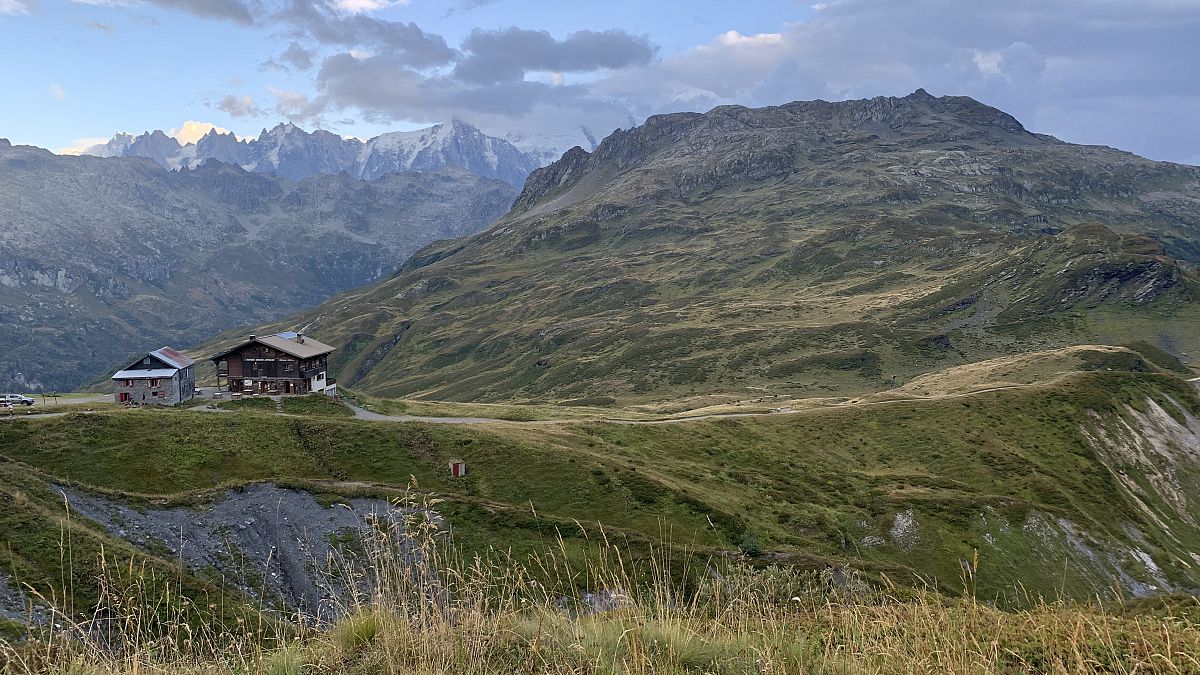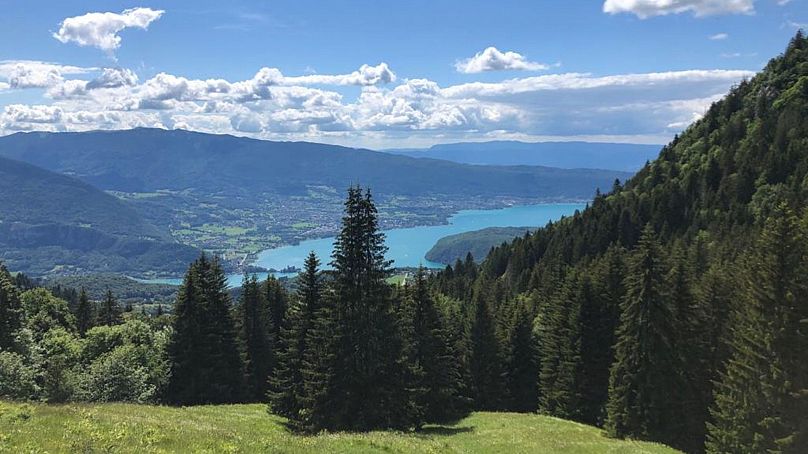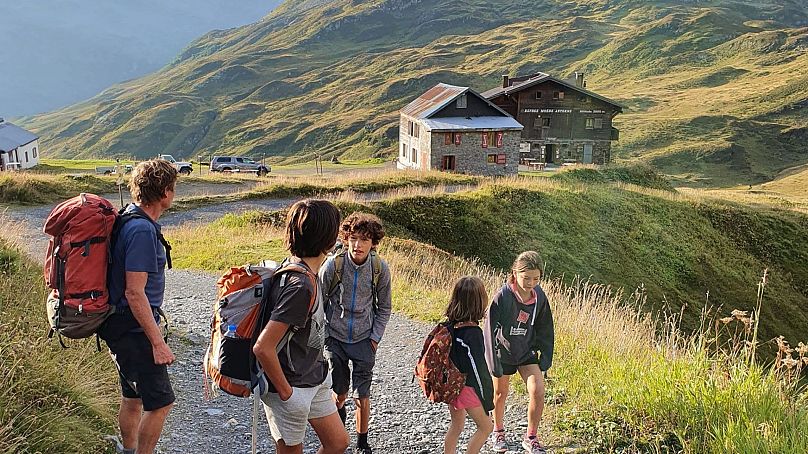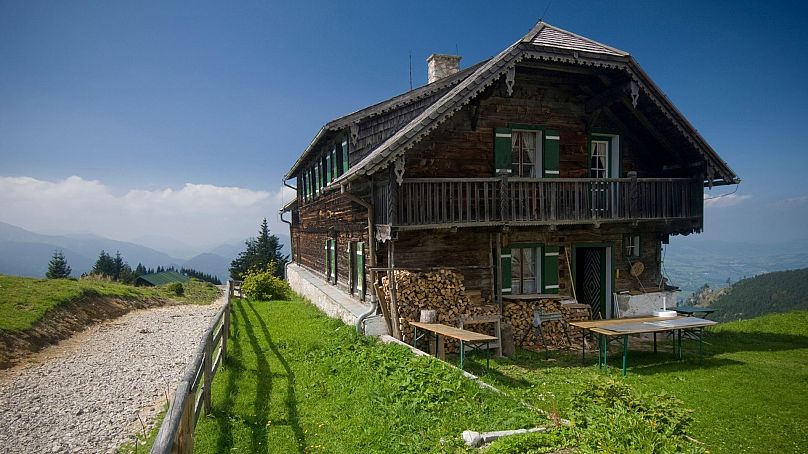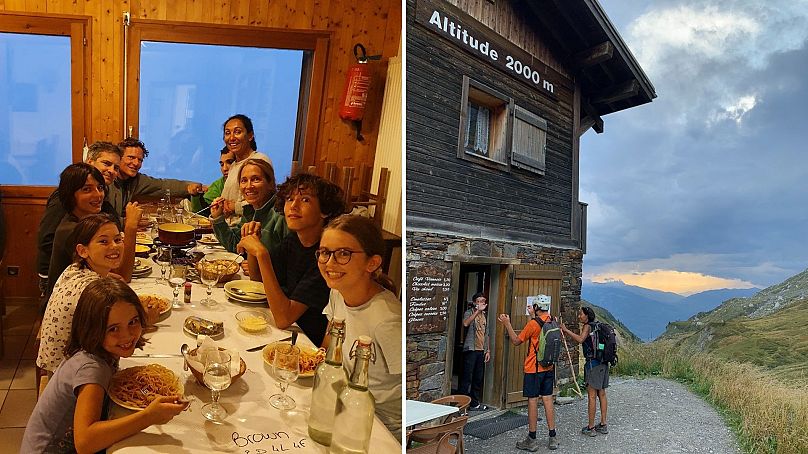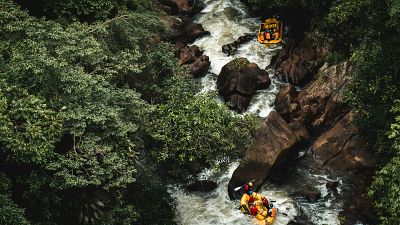Planning an overnight trip to a mountain refuge is not for the faint-hearted, but is well worth the effort.
So first off, here’s what not to do on your first trip to a French Alpine refuge.
Do not go to Decathlon, buy a pair of spanking new hiking boots, and set off on the 'Tour de Mont Blanc'. As iconic for walkers as the 'Tour de France' for cyclists, this legendary route encircles Mont Blanc, passing through France, Italy and Switzerland.
Because within 30 minutes of leaving Chamonix, you will feel your first blister. By the end of day one, my heels resembled raw bacon. Only 11 more days to go.
Despite the foolish debut, this trip sealed my love of mountain refuges. Walking through Alpine forests and meadows, hearing the distant clanging of cowbells, picking wild raspberries, tucking into local cheese and saucisson, cooling down next to a glacier…you can’t get much more off the beaten track than this.
And now imagine that feeling of relief and satisfaction when you arrive, dusty and sweaty, at a sturdy stone chalet perched high up the mountain. You unlace your boots and sit down, pumped with endorphins from your exertion, to an ice-cold beer and breath-taking views of snowy peaks.
That night, you are served a hearty three-course meal before sinking exhausted into your bed, surrounded by stars and silence.
High up in the Alps is a network of hundreds of mountain refuges
Ranging from unmanned huts to mini-hotels perched on the edge of glaciers over 2000 metres above sea level, refuges are open to all. But few know they exist or how to access them. Not intentionally secretive, it’s just that mass tourism and modern marketing aren’t really their priority.
But before we get carried away, let’s acknowledge that mountain refuges are not everyone’s cup of tea.
They are remote - often several hours on foot from the nearest road or human dwelling. They are basic – water comes from mountain springs, electricity from solar panels, and a trip to the loo in the night can mean stumbling down a creaky wooden staircase and heading outside to a dry toilet.
On the plus side, they are relatively affordable – a three-course meal, often home-made using local produce, and a bed for the night in a shared room or dormitory generally cost around 40-50 euros per person.
Each mini-expedition requires careful preparation
Your first challenge will be to choose and book a refuge.
Unfortunately, this is not as easy as it sounds, as there is no centralised information and reservation system. Mountain refuges are run by a range of bodies from private individuals, to individual communes and the Club Alpin Français.
Promoted by local, departmental and regional tourist boards, the jumble of websites and phone numbers can be quite bewildering, especially for non-French speakers.
Here is my hack if your French, and your patience, is not up to navigating this tangle of information.
Check out the packaged Alpine refuge trips highlighted on the few niche UK tour operators’ websites, such as French Alps Treks + Guiding. Often they give itineraries, detailing their chosen stop-overs and the distances between them. If you don’t fancy joining a guided group, you can google one of these refuges and book direct.
Most refuge keepers speak enough English to take a booking, if you really don’t have the French for ‘Je voudrais réserver une nuit en refuge…’
Maps are crucial for navigating at high altitude
While refuges are generally well-signposted from the nearest car parks or public transport stops, it is always best to have a detailed walking map with you as back-up. The Institut Géographique Nationale (IGN) is the French equivalent of Ordnance Survey and their 1:25,000 maps are superbly detailed.
You can use the IGN map application on your phone, but remember there aren’t many charging points up a mountain.
Estimating how long it will take to walk from A to B is a nerve-wracking challenge for beginner hikers.
You want to arrive at the refuge at around 5pm to catch the sunset and savour your pre-dinner beer. An average walker on flat terrain will cover around 5km/hour. But what if climbing steeply upwards, or downwards, on a narrow and rocky path, carrying a backpack?
Most signposts in the Alps indicate an estimated walking time, as well as the destination, but this isn’t much use when planning from the comfort of your living room. If you don’t feel comfortable using Naismith’s rule to estimate your uphill hiking time, do not be afraid to call the refuge to ask (you won’t be the first) or the local tourist office (who will speak English).
Respecting ‘refuge etiquette’
Refuges are friendly places, where you can easily strike up conversations, and share routes and tips with other travellers. But it’s important to remember that you are in France, and the French love to be greeted properly.
This means saying ‘Bonsoir, Monsieur’ or ‘Bonjour, Madame’ on arrival, ideally to everyone you come across. If you need to ask for anything, don’t launch straight into your request American-style, with a ‘Can I get…?’ First you need to say hello properly, acknowledging that you are interacting with a person, not a robot. Then you can make your request.
Before COVID, everyone dined together on long wooden tables and slept in dormitories. Now, groups tend to be separated for dinner, and dorms are split into shared bedrooms or partitioned.
For the comfort of all, there are key rules to observe, such as removing outdoor shoes, not wasting water or electricity, making your bed before leaving, taking away your own rubbish. If in doubt, reading this excellent guide on ‘How to behave in a mountain refuge’ will help.
Top choices: from majestic settings to donkeys outside our hut
Every refuge is different and each has its charm. This makes it difficult to pick out favourites, but here are my top three, to help you get started.
- Refuge Le Lindion: 19 beds, wood-burning stove, free-range chickens, run by agriculture students who also look after the local cow herd, home-made after dinner digestif on the house. 1h30 mins walk from Morette car park, near Annecy.
- Refuge de Moëde-Anterne: 91 beds, spectacular views of Mont Blanc, family-run, delicious fondue made from local cheeses, 2h15 mins walk from Plaine-Joux, near Chamonix.
- Refuge du Pré-Vérel: 34 beds, the adjoining restaurant serves the best côte de bœuf in the Alps (cooked over an open-fire), accessible on foot or by car, nearest village is Talloires-Montmin.
